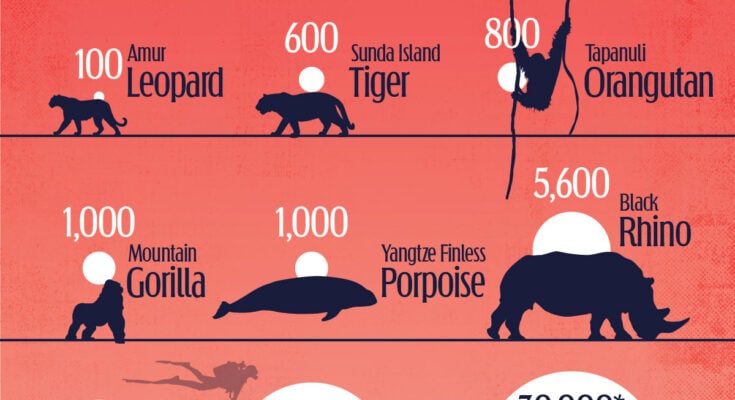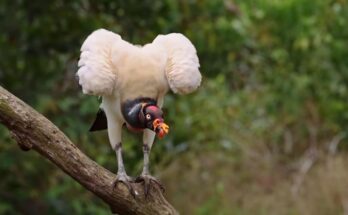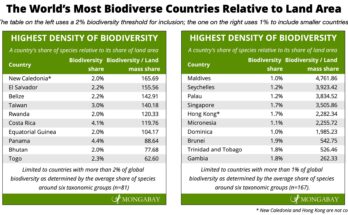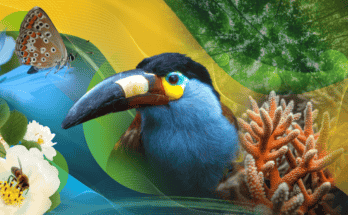The Javan rhino is the most endangered wildlife species. Fewer than 70 individuals remain in the wild.
Endangered wildlife species face extinction due to habitat loss, poaching, and climate change. The Javan rhino is critically endangered, living in the dense jungles of Indonesia. Conservation efforts are crucial to prevent their extinction. Understanding the plight of such species helps us take action.
By learning about the Javan rhino, we can better appreciate the importance of protecting our planet’s biodiversity. In this blog, we’ll explore the factors that contribute to their endangerment and how we can help save these majestic creatures. Let’s dive into the world of endangered species and discover what we can do to make a difference.
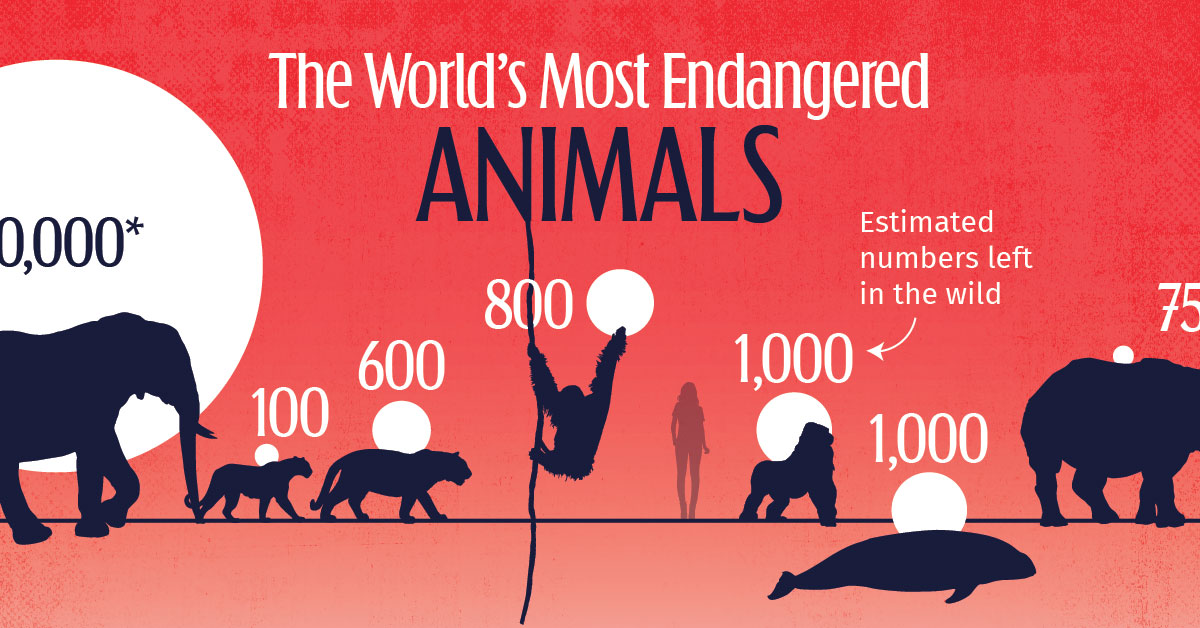
Introduction To Endangered Species
The Javan rhino is one of the most endangered wildlife species. Only about 60 individuals remain in the wild. Their habitat is limited to a single national park in Indonesia.
Many animals face the threat of extinction. These endangered species are vital to our planet. They play critical roles in their ecosystems. Saving them is crucial for our environment’s health.Importance Of Biodiversity
Biodiversity means the variety of life on Earth. It includes plants, animals, and microorganisms. Each species has a unique role. They help maintain balance in nature. High biodiversity ensures ecosystems remain resilient. It supports clean air, water, and food supplies. It also provides resources for medicine and agriculture.Causes Of Endangerment
Human activities are the main cause of species endangerment. Habitat destruction is a significant factor. Deforestation, urbanization, and agriculture destroy natural habitats. Pollution harms the environment and wildlife. Climate change affects species’ ability to survive. Overhunting and poaching reduce animal populations. Invasive species disrupt local ecosystems. These factors combined push many species to the brink of extinction. “`Javan Rhino
The Javan Rhino is among the world’s most endangered species. With fewer than 70 individuals left in the wild, this majestic creature is on the brink of extinction. Found only in Indonesia, the Javan Rhino faces numerous threats that jeopardize its survival.
Habitat And Range
The Javan Rhino inhabits the dense tropical forests of Ujung Kulon National Park on the island of Java, Indonesia. This park offers the ideal environment for these rhinos with lush vegetation and abundant water sources. The Javan Rhino’s habitat is limited to this single location, making its population extremely vulnerable.
Threats And Conservation Efforts
Habitat loss due to agricultural expansion and human settlement poses a significant threat. Poaching is another critical danger, driven by the high value of rhino horns in illegal markets. Additionally, natural disasters, such as volcanic eruptions and tsunamis, threaten their limited habitat.
Conservation efforts focus on protecting their habitat and preventing poaching. The Indonesian government and various NGOs work tirelessly to safeguard the Javan Rhino. Key strategies include:
- Strengthening anti-poaching patrols
- Restoring and preserving the rhino’s natural habitat
- Conducting scientific research to monitor health and population
- Raising awareness and involving local communities in conservation
By supporting these efforts, we can help ensure the survival of this incredible species for future generations.
Vaquita
The Vaquita is one of the most endangered wildlife species. This small porpoise lives in the northern part of the Gulf of California, Mexico. With fewer than 10 individuals remaining, the Vaquita is on the brink of extinction.
Unique Characteristics
The Vaquita is the smallest marine mammal. It reaches up to 5 feet in length and weighs around 120 pounds. Its body is grey, with a dark ring around each eye and dark patches on its lips. This gives it a unique and endearing appearance.
The Vaquita has a small, rounded fin. This helps it navigate through the shallow waters of its habitat. Unlike other porpoises, it has a relatively short lifespan of about 20 years. It is also known for its elusive nature. It is rarely seen by humans.
Challenges For Survival
The biggest threat to the Vaquita is bycatch. This occurs when it gets caught in illegal gillnets used for fishing another endangered species, the totoaba. The swim bladder of the totoaba is highly valued in traditional Chinese medicine, leading to illegal fishing practices.
The Vaquita’s small population makes it more vulnerable to extinction. With fewer individuals, there is less genetic diversity. This makes it harder for the population to recover from diseases or environmental changes.
Pollution and habitat degradation also pose threats to the Vaquita. Industrial activities and agricultural runoff pollute the waters of the Gulf of California. This affects the Vaquita’s food sources and overall health.
Amur Leopard
The Amur Leopard, a magnificent and elusive creature, is one of the world’s most endangered big cats. Found in the forests of Russia and China, this leopard is known for its stunning coat and solitary nature. Sadly, the Amur Leopard faces numerous threats that have brought it to the brink of extinction.
Population Status
The Amur Leopard’s population is critically low. Estimates suggest that fewer than 100 individuals remain in the wild. These leopards are scattered across the Amur River basin in the Russian Far East and parts of northeastern China. The small population size makes them highly vulnerable to genetic problems and diseases. Every individual is crucial for the survival of the species.
Protection Measures
Efforts to protect the Amur Leopard are in place. Conservation programs focus on habitat protection, anti-poaching patrols, and breeding programs. Wildlife reserves have been established to safeguard their habitats. These areas are monitored to prevent illegal logging and hunting. Breeding programs aim to increase the population and maintain genetic diversity. Local communities are also involved in conservation efforts, raising awareness about the importance of protecting this rare species.
Sumatran Orangutan
The Sumatran Orangutan is among the most endangered wildlife species today. It is native to the island of Sumatra in Indonesia. This great ape is known for its striking red fur and intelligent eyes. Many people consider it one of our closest relatives in the animal kingdom. Yet, its existence is threatened by various human activities. Protecting the Sumatran Orangutan is vital for maintaining biodiversity.
Behavior And Ecology
Sumatran Orangutans live in dense tropical rainforests. They spend most of their time in trees. This arboreal lifestyle helps them find food and avoid predators. Their diet consists mostly of fruits, but they also eat leaves, bark, and insects. Unlike other primates, Sumatran Orangutans are solitary creatures. They usually form temporary groups only during the fruiting season.
Female Sumatran Orangutans give birth every eight to nine years. This slow reproduction rate makes their population growth very slow. Young orangutans stay with their mothers for up to eight years. They learn essential survival skills during this time. This strong bond helps ensure the young orangutans can thrive on their own.
Human Impact
Human activities have drastically impacted Sumatran Orangutans. Deforestation is the primary threat to their habitat. Logging, palm oil plantations, and mining activities destroy their homes. As their forest habitat shrinks, orangutans find it harder to find food and shelter. Many are forced to venture into human settlements, where they face more dangers.
Poaching is another significant threat. Some people hunt orangutans for bushmeat. Others capture them for the illegal pet trade. These activities reduce their already small population. Conservation efforts are in place, but they need more support. Protecting the Sumatran Orangutan requires global attention and action.
Hawksbill Turtle
The Hawksbill Turtle is one of the most endangered species in the world. These magnificent creatures have been around for millions of years. Their unique beaks resemble a hawk’s bill, which gives them their name. They play a vital role in maintaining the health of coral reefs and marine ecosystems. Sadly, their numbers are dwindling rapidly.
Marine Environment
The Hawksbill Turtle thrives in tropical coral reefs. These turtles help keep the reefs healthy by eating sponges. This allows other marine life to flourish. Without them, the balance of the reef ecosystem would be disrupted. Their presence indicates a healthy marine environment.
Coral reefs are under threat from climate change and pollution. Rising sea temperatures cause coral bleaching, which affects the Hawksbill’s habitat. Pollution, especially plastic waste, is another significant threat. Turtles mistake plastic for food, which can be fatal.
Poaching And Trade
Poaching is a major threat to the Hawksbill Turtle. Their beautiful shells are highly prized. They are used to make jewelry and decorative items. This illegal trade is a significant reason for their declining numbers.
Despite international laws protecting them, illegal poaching continues. Efforts to stop the trade are ongoing, but challenges remain. Awareness and education can help reduce demand for turtle products.
| Threat | Impact |
|---|---|
| Habitat Loss | Destroys nesting and feeding grounds |
| Pollution | Causes ingestion of harmful materials |
| Climate Change | Leads to coral bleaching |
| Poaching | Reduces population due to illegal trade |
Protecting the Hawksbill Turtle requires global cooperation. Support conservation efforts to ensure these turtles survive for future generations.
Mountain Gorilla
The Mountain Gorilla is one of the most endangered wildlife species. Found in the misty mountains of Central Africa, these majestic creatures are facing numerous threats. Conservation efforts are crucial to ensure their survival.
Social Structure
Mountain Gorillas live in groups called troops or bands. These groups usually consist of one dominant male, known as a silverback, multiple females, and their offspring. The silverback leads and protects the group. He also makes decisions about the group’s movements and feeding spots.
Mountain Gorillas are highly social animals. They communicate through vocalizations, facial expressions, and body postures. They form strong bonds with each other, which helps them survive in their harsh environment.
Habitat Destruction
One of the biggest threats to Mountain Gorillas is habitat destruction. Their forest homes are being destroyed for agriculture, logging, and human settlement. This loss of habitat leaves them with less space to live and find food.
In addition to habitat loss, poaching also poses a significant threat. Gorillas are often caught in traps set for other animals. Even though hunting Mountain Gorillas is illegal, they are still targeted by poachers.
Efforts to protect their habitat include creating national parks and reserves. These protected areas help ensure that the gorillas have a safe place to live. Conservation organizations also work with local communities to promote sustainable practices and reduce human-wildlife conflict.
| Threat | Description |
|---|---|
| Habitat Destruction | Forests cleared for agriculture, logging, and settlements. |
| Poaching | Illegal hunting and traps set for other animals. |
Protecting the Mountain Gorilla is essential for biodiversity. Their survival depends on our actions today.
Saola
The Saola, also known as the “Asian Unicorn,” is one of the rarest large mammals on Earth. This elusive animal was first discovered in the mountains of Vietnam. With its long, straight horns and striking white markings, the Saola is a true enigma of the animal kingdom.
Discovery And Rarity
The Saola was discovered in 1992. Scientists were excited by this significant find. It was the first large mammal discovery in over 50 years. They found the Saola in the Annamite Range. This area stretches between Vietnam and Laos. Sightings of the Saola are extremely rare. This has made it a symbol of mystery and intrigue. Experts estimate that fewer than 100 Saolas exist in the wild today.
Conservation Programs
Conservation efforts are critical for the Saola’s survival. Various programs aim to protect its natural habitat. National parks have been established in the Annamite Range. These parks provide a safe space for the Saola. Local communities also play a role. They help monitor and protect the Saola’s environment. International organizations fund these efforts. They support research and conservation projects. Awareness campaigns educate the public about the Saola. These initiatives are crucial for the future of this endangered species.
South China Tiger
The South China Tiger, also known as the Amoy Tiger, is critically endangered. Native to the forests of southern China, this majestic animal once roamed freely. Conservationists now focus on preserving and breeding these tigers in captivity.
Historical Range
The South China Tiger’s historical range included vast areas of southern China. They lived in forests, mountains, and grasslands. These tigers thrived in habitats with abundant prey and dense cover. Over time, their habitat shrank due to deforestation and human encroachment.
By the 1950s, their population began to decline rapidly. Habitat loss and hunting were major threats. By the 1990s, less than 30 South China Tigers remained in the wild. Today, they are considered functionally extinct in the wild.
Captive Breeding
Captive breeding programs aim to save the South China Tiger from extinction. These programs involve breeding tigers in controlled environments. Zoos and wildlife reserves participate in these efforts. They provide safe habitats and medical care for the tigers.
Breeding centers in China have seen some success. As a result, there are now around 100 South China Tigers in captivity. These programs focus on genetic diversity and healthy populations. The ultimate goal is to reintroduce these tigers into the wild.
Conservationists also educate the public about the importance of these tigers. They raise awareness and support for ongoing conservation efforts. By working together, we can help ensure the survival of the South China Tiger.
Cross River Gorilla
The Cross River Gorilla is one of the most endangered species in the world. These unique primates are found in the dense forests of Nigeria and Cameroon. They are the rarest of the great apes, with only about 300 individuals left.
Fragmented Populations
Cross River Gorillas live in small, isolated groups. Their habitat is fragmented due to human activities. Logging and farming have divided their forest home into patches. These patches are often far apart, making it hard for gorillas to meet and breed.
Fragmentation also exposes gorillas to poachers. They have fewer places to hide. This increases their risk of being hunted. The scattered groups also face challenges in finding food and shelter.
Community Conservation
Local communities play a key role in protecting Cross River Gorillas. Conservation efforts focus on involving villagers in gorilla protection. Educating people about the importance of gorillas helps build support. Communities are encouraged to adopt sustainable practices.
Community-based projects include reforestation and alternative livelihoods. Planting trees restores gorilla habitats. Providing other sources of income reduces the need to clear forests. These efforts help create a safer environment for the gorillas.
Sumatran Elephant
The Sumatran Elephant is critically endangered. This gentle giant is native to the island of Sumatra, Indonesia. Its population has drastically declined over the past decades. Loss of habitat and human-wildlife conflicts are major threats.
Forest Ecosystem
The Sumatran Elephant plays a crucial role in the forest ecosystem. It helps in seed dispersal, which supports plant growth. This activity maintains the biodiversity of the forest. Without these elephants, many plant species would struggle to survive.
They also create clearings in the forest. These clearings allow sunlight to reach the forest floor. This encourages the growth of new plants. The forest ecosystem relies on these elephants for balance and health.
Human-wildlife Conflict
Human-wildlife conflict is a severe issue for Sumatran Elephants. As humans expand into their habitats, conflicts arise. Elephants often raid crops, leading to retaliation from farmers. This conflict results in injuries and deaths on both sides.
Efforts to reduce conflicts include building barriers and promoting coexistence. Educating local communities about the importance of elephants is also vital. Finding sustainable solutions can help protect these magnificent creatures.

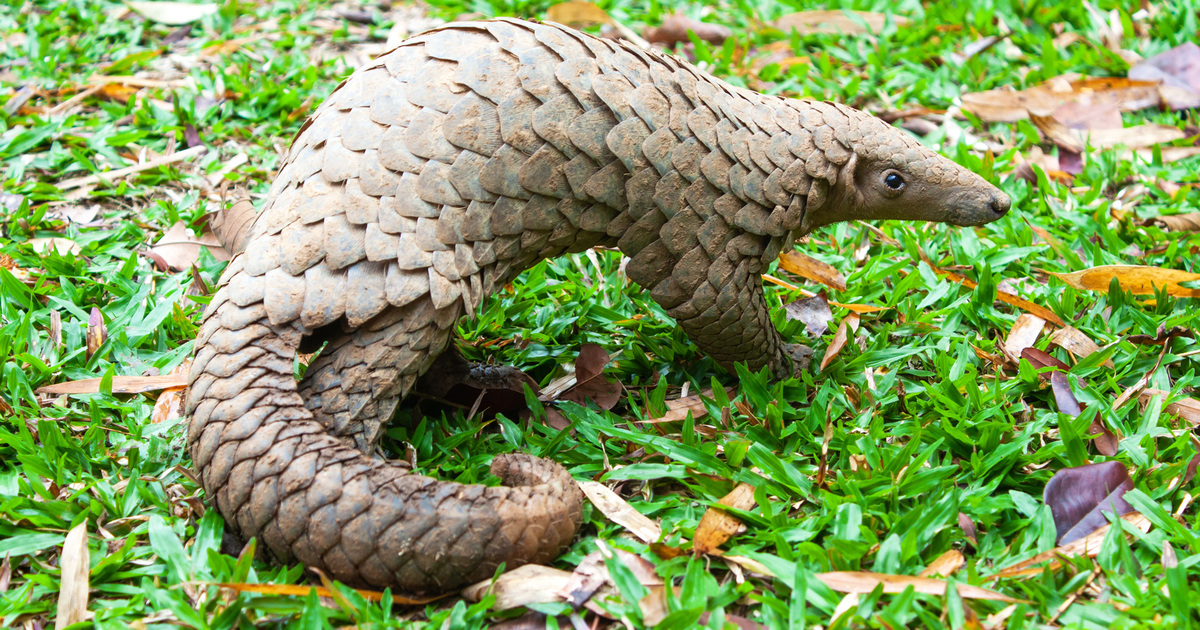
Frequently Asked Questions
What Is The Most Endangered Wildlife Species?
The Javan Rhino is currently considered the most endangered wildlife species. With fewer than 75 individuals left, they face critical threats from habitat loss and poaching.
Why Are Javan Rhinos Endangered?
Javan Rhinos are endangered due to habitat destruction, poaching, and limited genetic diversity. These factors severely impact their survival and reproduction rates.
How Many Javan Rhinos Are Left?
There are fewer than 75 Javan Rhinos remaining in the wild. They are primarily found in Ujung Kulon National Park, Indonesia.
Where Do Javan Rhinos Live?
Javan Rhinos are found in Ujung Kulon National Park in Indonesia. This park provides a vital habitat for their survival.
Conclusion
Protecting endangered species is crucial for our planet’s health. Every animal matters. Simple actions can help save them. Support conservation efforts. Spread awareness. Respect wildlife habitats. Report illegal activities. Small steps make a big difference. Future generations depend on our choices.
Let’s act now. Preserve biodiversity. Save endangered species. Make our world a better place for all.
